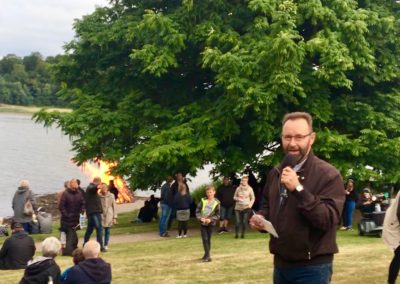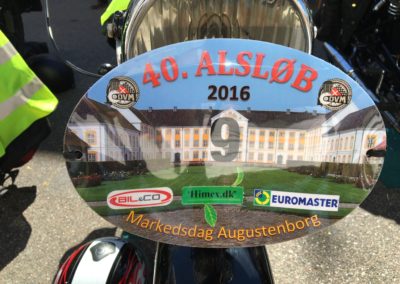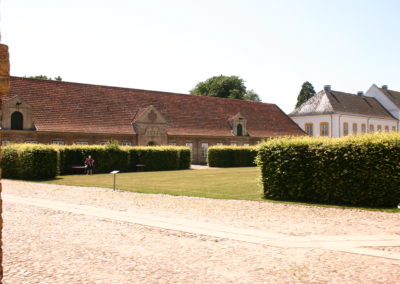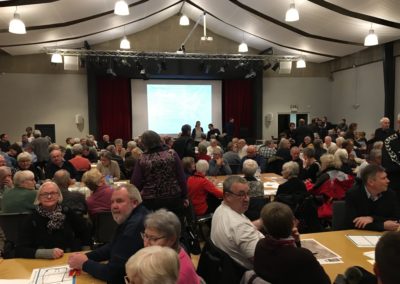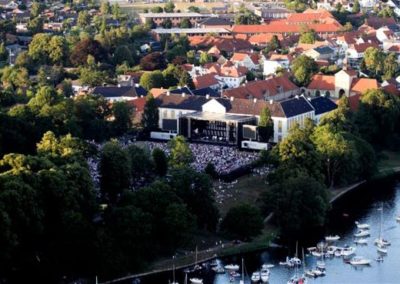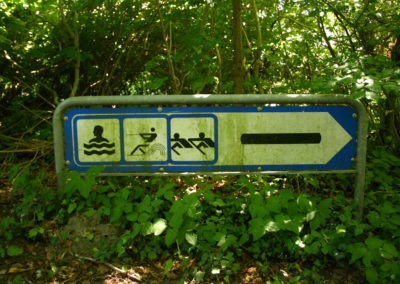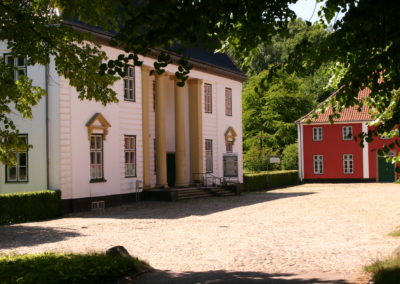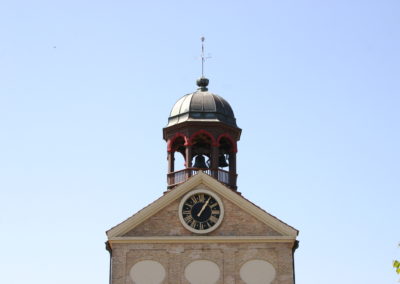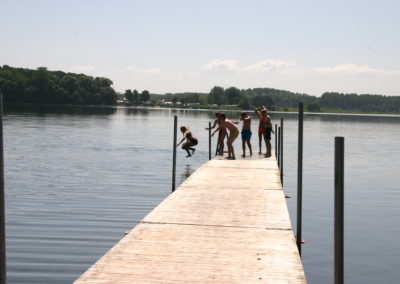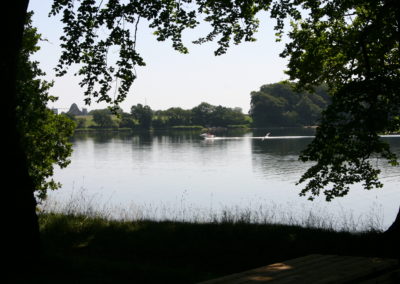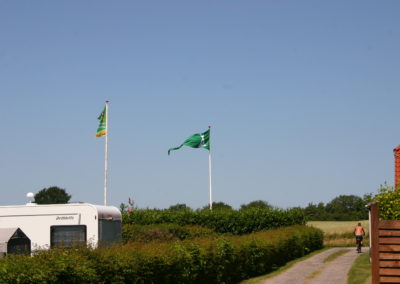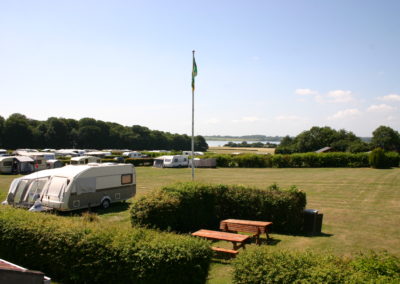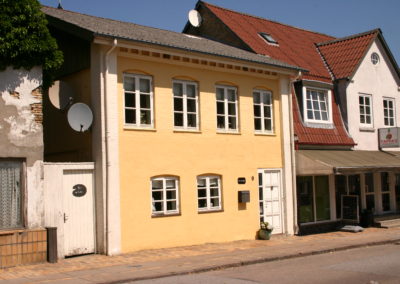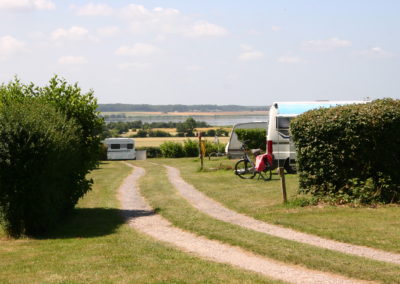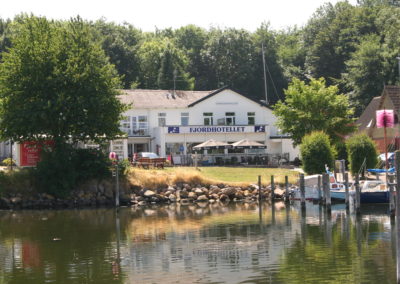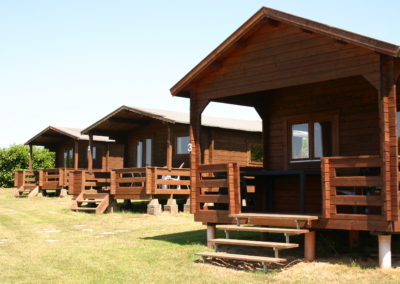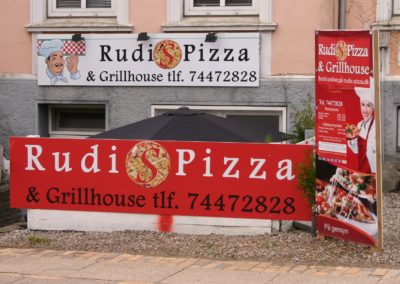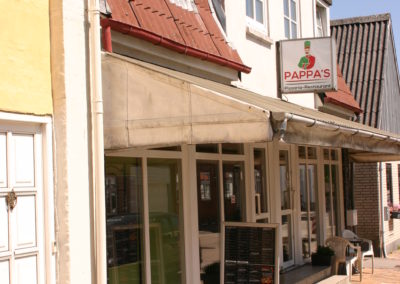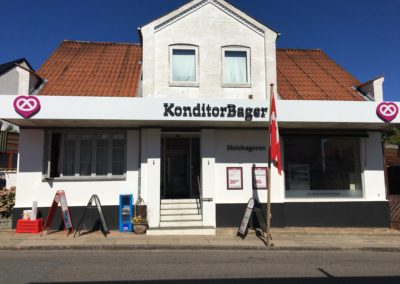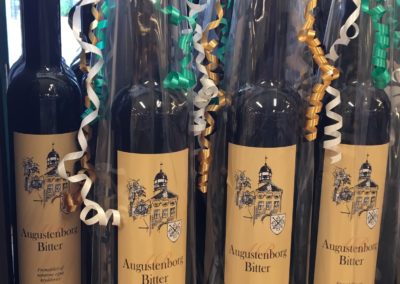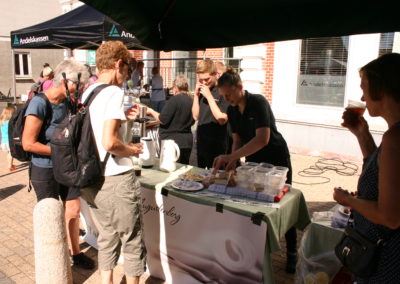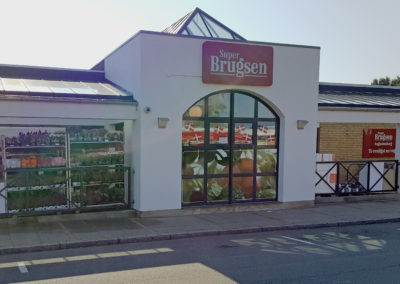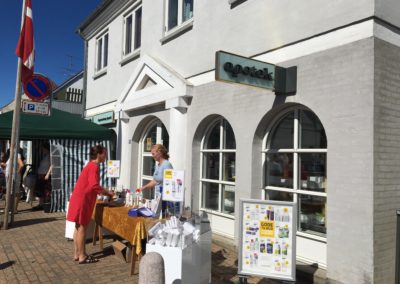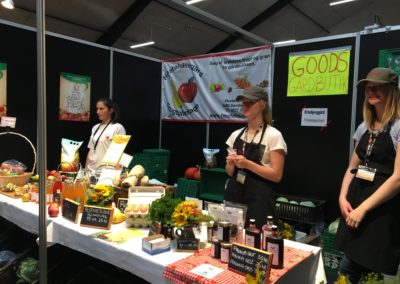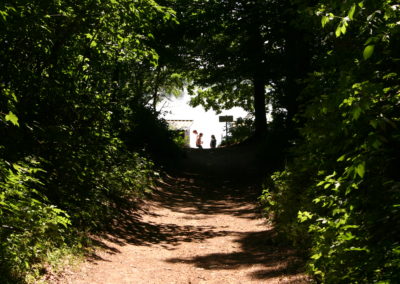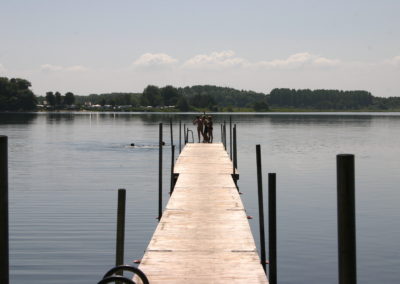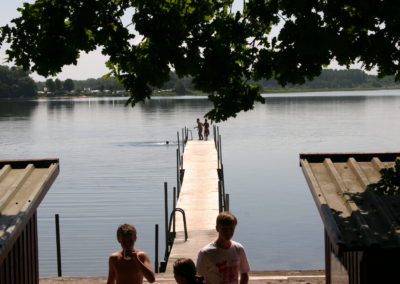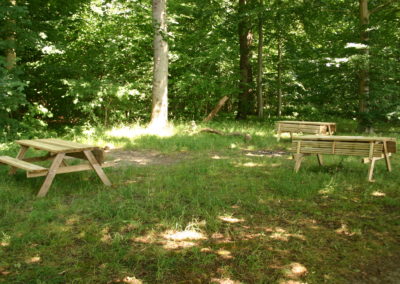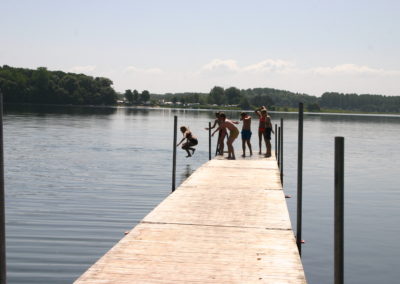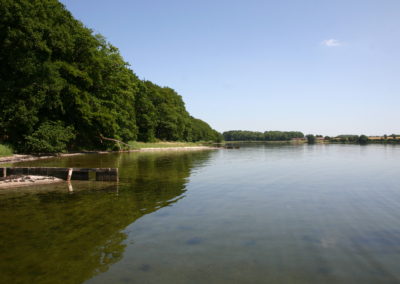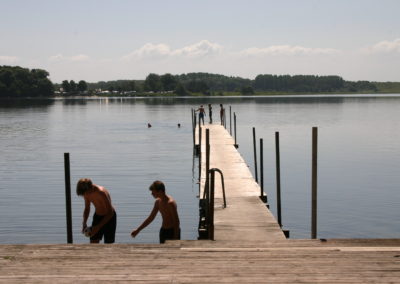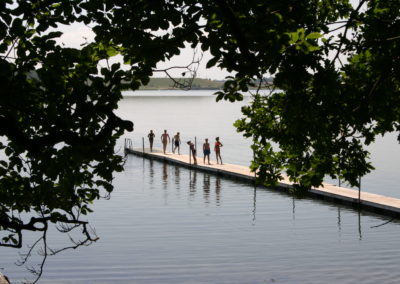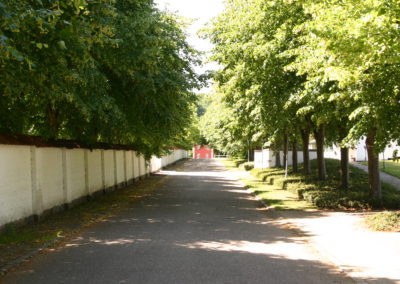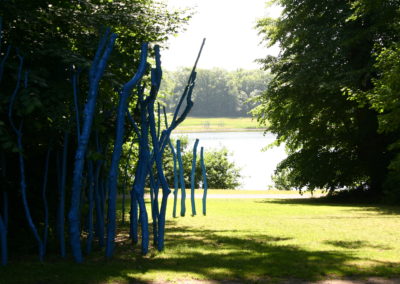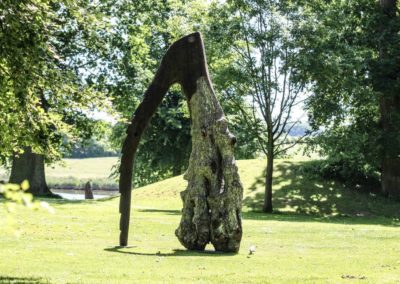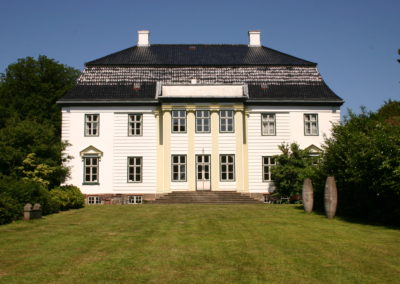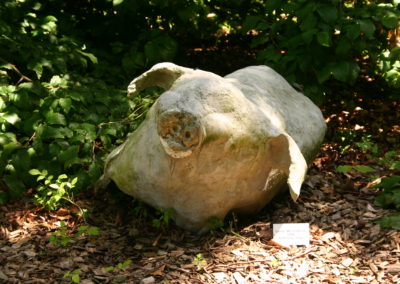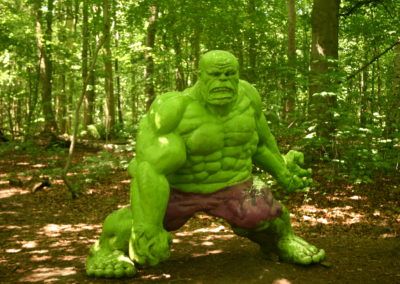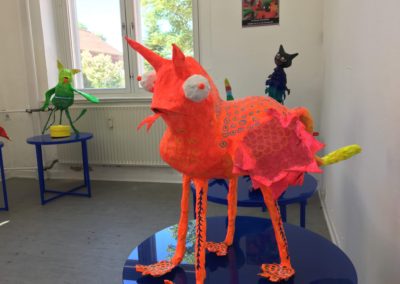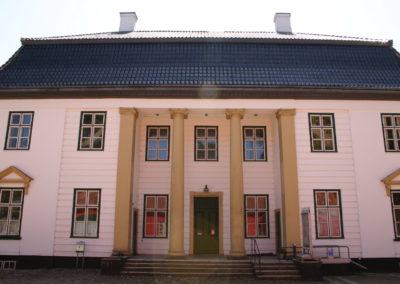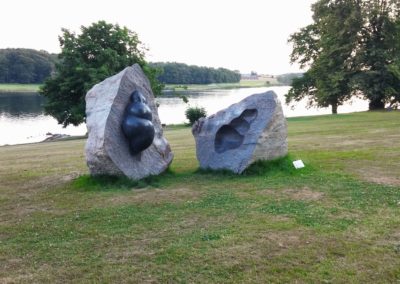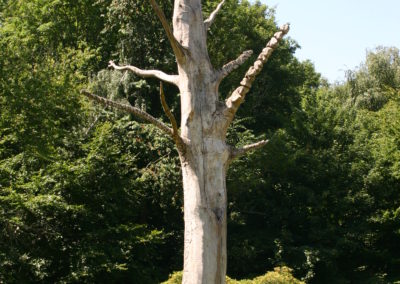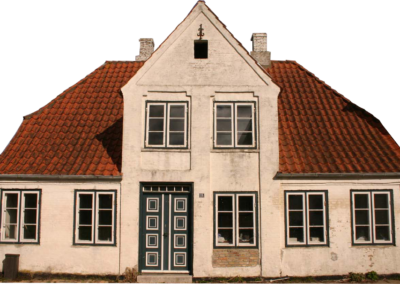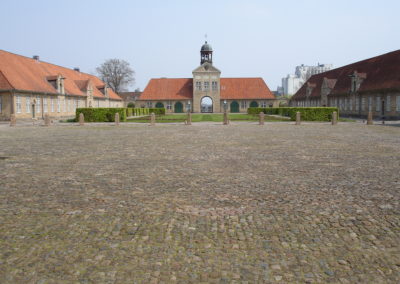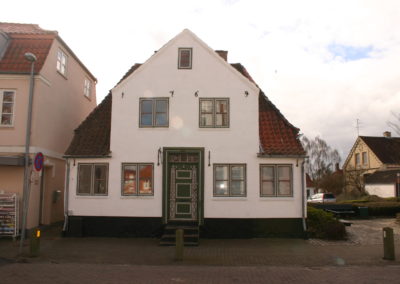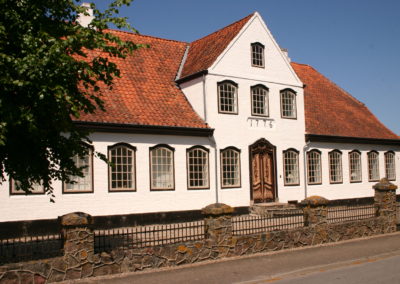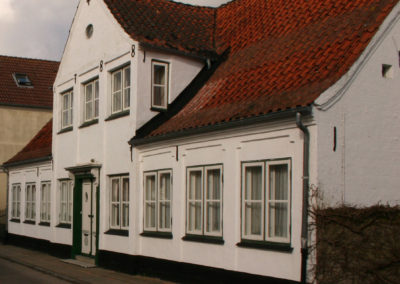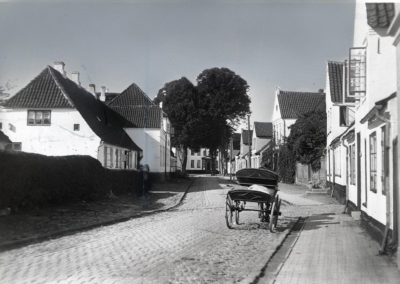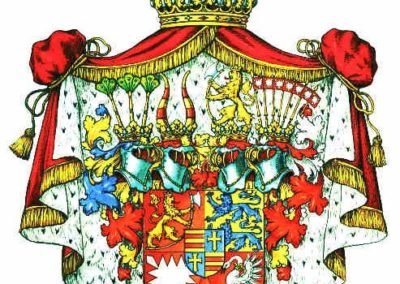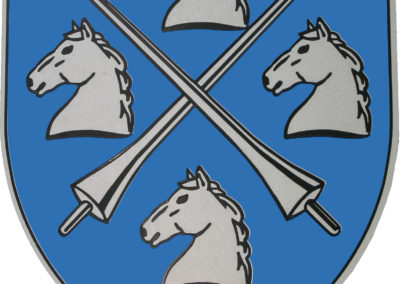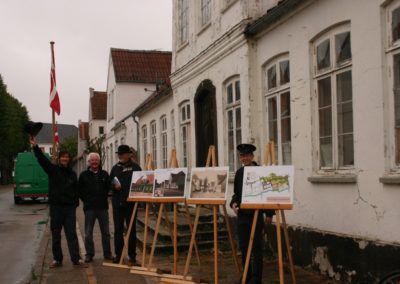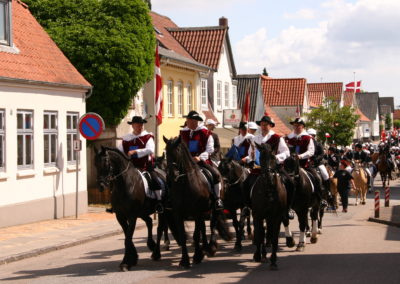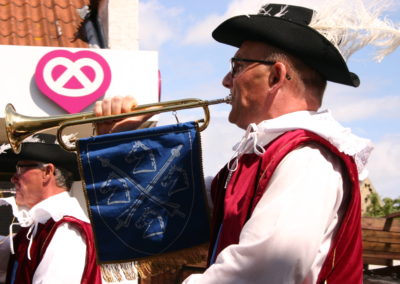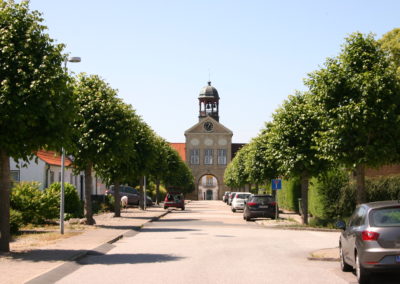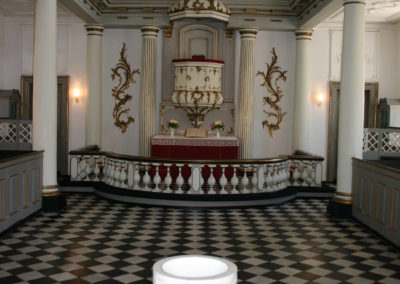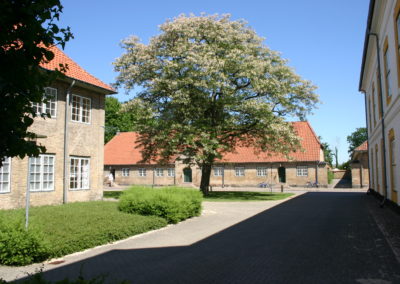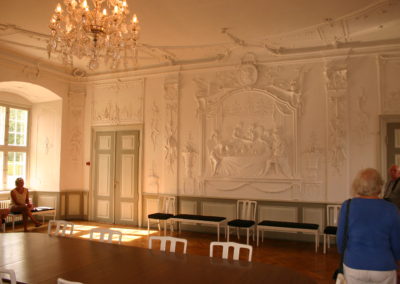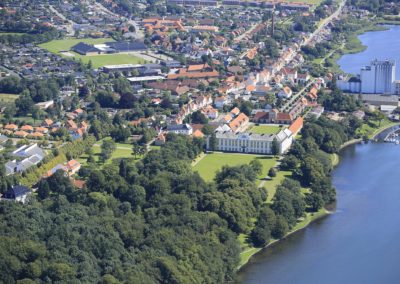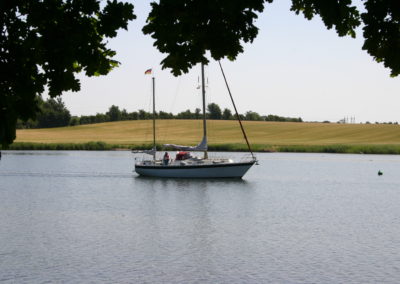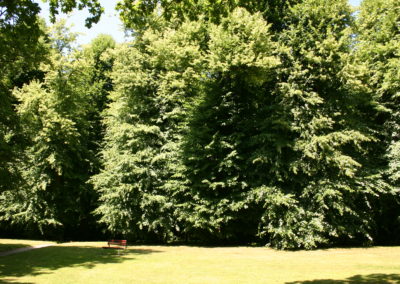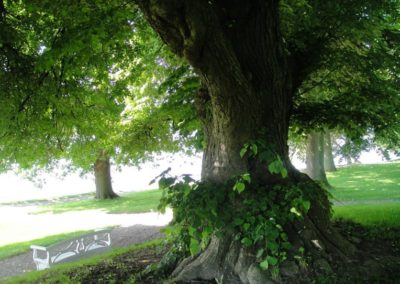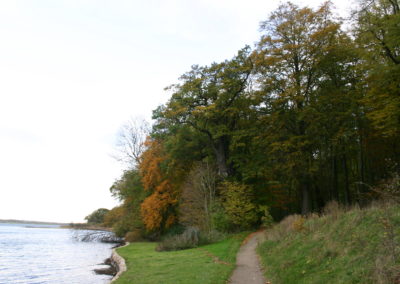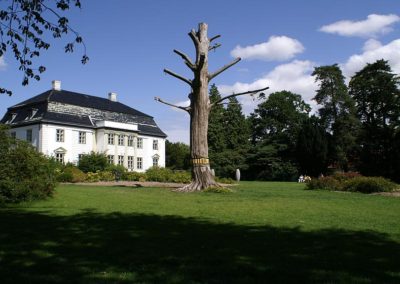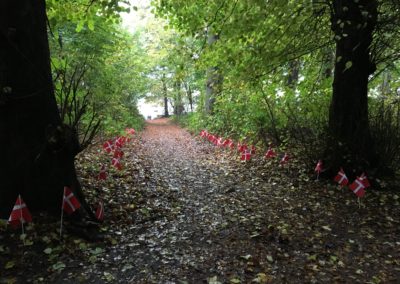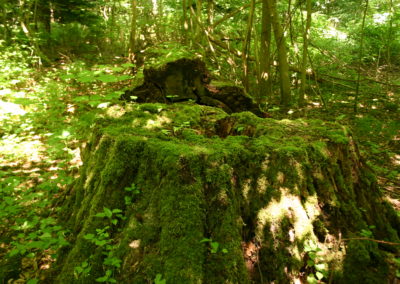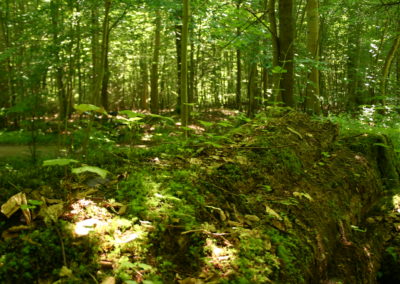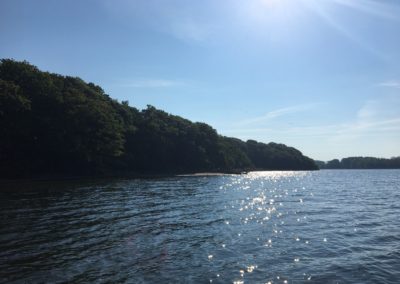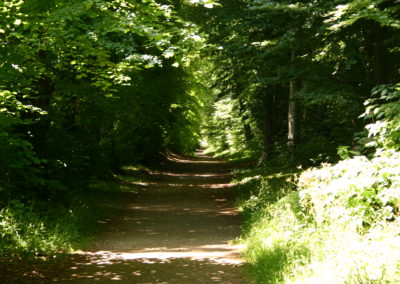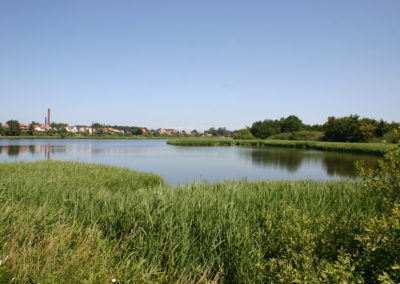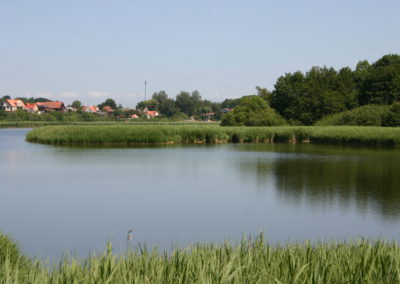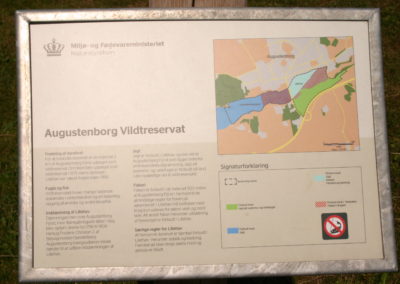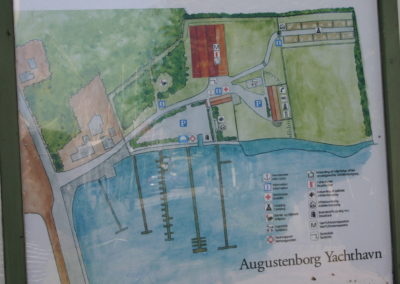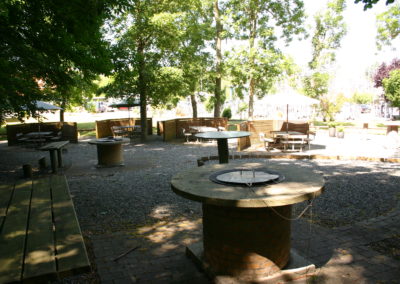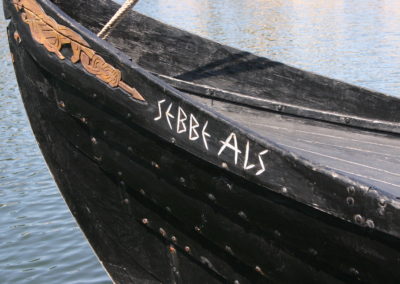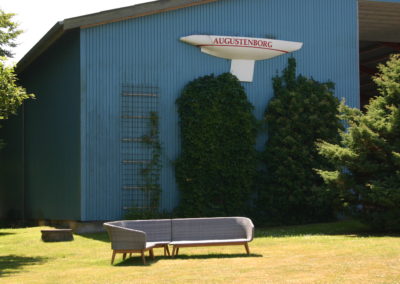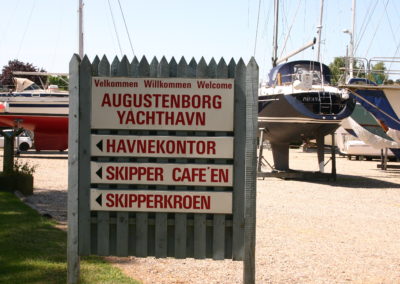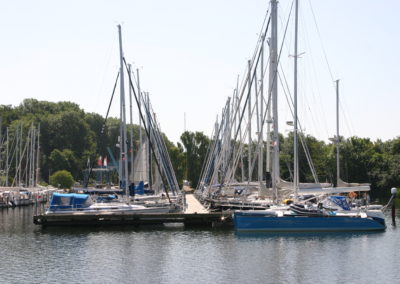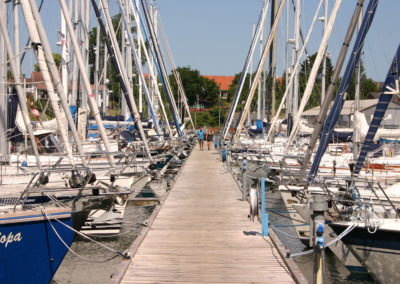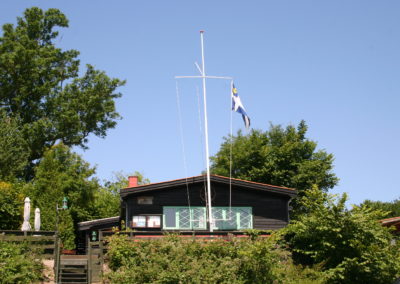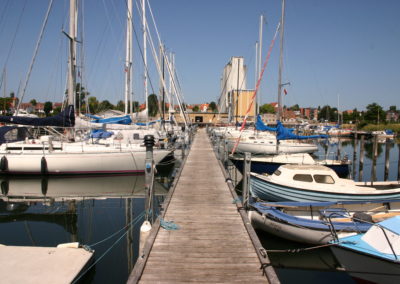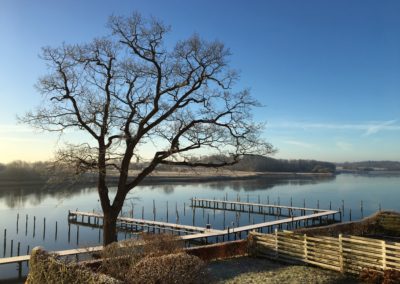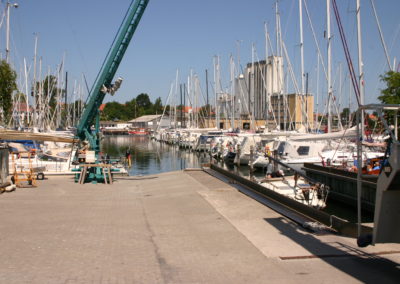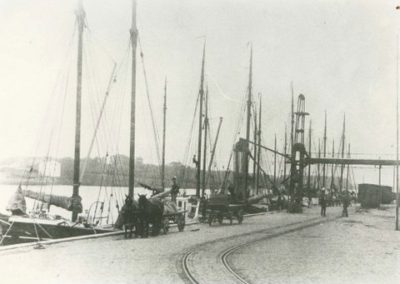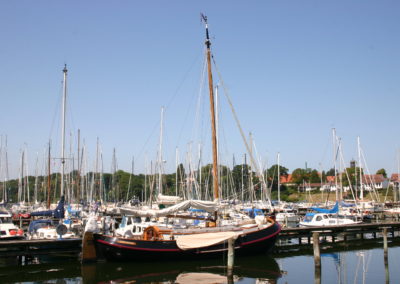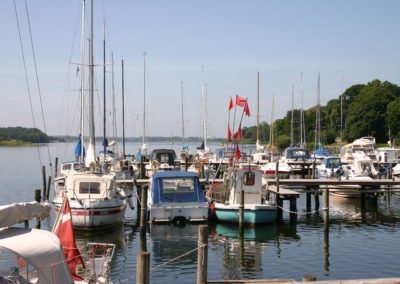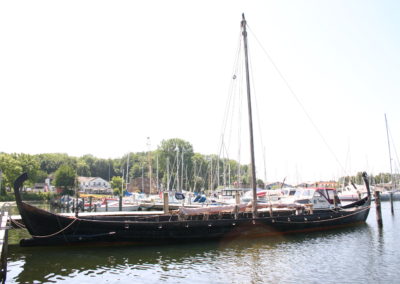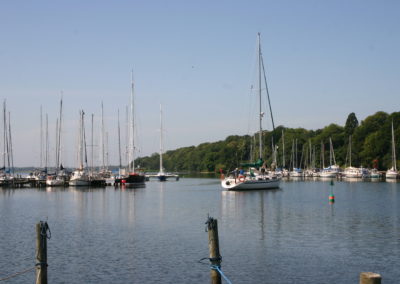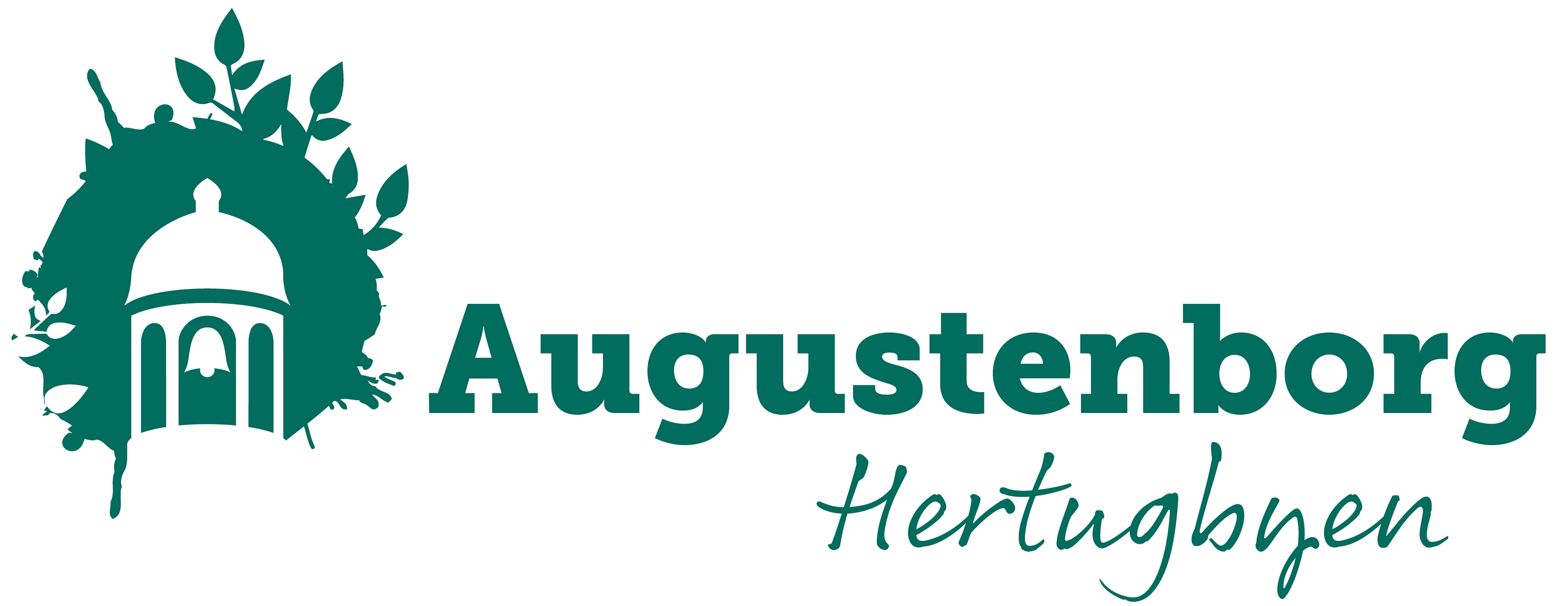General Information
With its 3,288 inhabitants, Augustenborg is not too big and not too small. As a tourist, you will experience the great hospitality and helpfulness of the people of Augustenborg – a smile and a “mojn” [ˈmʌjn], a greeting that is used for both “good day” and “goodbye”.
Augustenborg is a fast-developing town with more than 40 voluntary associations working with everything from art, preservation and history to lots of sports, horse riding, sailing, revue, music and winter swimming. In the middle of the town is a large stadium and a state-of-the-art, environmentally certified, sports and cultural centre. The town has a large school with public library and after-school activities (SFO). Please see the town guide (map).

Accommodation
Eateries

Shopping

The Bathing Houses
The bathing houses were first mentioned in 1769, where swimming emerged as part of the back-to-nature movement. The site has been of great importance to many people and has served as a public bath with a total of 10 large bathing houses in two places along the coast. When Augustenborg Palace became a psychiatric hospital in 1932, the bathing houses were also used by the patients and part of the bathing area was fenced off. Today, a small group of enthusiasts work to find funds for a complete renovation of the bathing houses, so that they can again become a gathering place for the town. Please see the town guide (map).

Art
In 2009 the art centre Augustiana moved into the mansion in the Palace Gardens. Since then Augustenborg has evolved into an art town with much to offer for art lovers and the performing artists. Today, the town is home to KunstVærket, which are open artist workshops in the old town hall, Louise Augustas Plads 1, where there are about 50 artists. KunstVærket is open the last weekend of every month 11.00-16.00. Opposite KunstVærket you find KunstPunkt, which opened in December 2010 with 30 members. KunstPunkt is an artist association and an art gallery for 200 artists and handicrafters in the old post office, Storegade 14. Most of the exhibitions in KunstPunkt are free of charge. Together with the art centre Augustiana, Augustenborg has become an “artist colony” where creative minds from all over the region gather. Please see the town guide (map).

History
Today, the town is a unique cultural environment that has developed around Augustenborg Palace as a very special mini-urban community – not a village – but a small town of functions, traders and craftsmen attached to the Court. The urban community already emerged in the early 1700s, but the central part – Storegade and Slotsallé – is today dominated by a number of buildings built over a short period of time from the 1760s to 1800s. The houses each have their individuality, but stylistically they all relate to the palace, which is from the same period. It is therefore a total environment of a very high quality and a character that in Denmark has Slotsgade in Møgeltønder as its only real counterpart.
The central part of the ducal town is protected by a historic preservation plan. In addition to the palace complex, there are 13 statutory listed buildings and 29 locally listed buildings in this small area. Especially in Storegade they form an almost unbroken row of a very fine character. The most dominant in this row of houses is “Hofrådens Hus” (Storegade 11), which is the largest and most significant building built for the Counsellor and Chief Inspector of the Duke. This building is statutory listed, but unfortunately has fallen into disrepair. In 2016, Hofrådens Hus was purchased by a private foundation, which is working to restore the building.
Many of the town houses are still named after their original residents; Mundskænkens Hus (House of the Cup-bearer), Postholderens Hus (House of the Post-holder), Hofpræstens Hus (House of the Court Preacher), Ebelings Hus (House of Ebeling), etc.
Horse Racing
Tilting is still a day of public rejoicing and can be experienced in many towns in Southern Jutland. Also in Augustenborg.

Augustenborg Palace
For more than 80 years, the palace was as a psychiatric hospital, but in 2015 the hospital moved to Aabenraa, and today the palace is home to the Danish Agriculture Agency, which has begun an extensive renovation of the main building, which ends in 2019. In the gatehouse of the palace, you find a mini-museum that provides a good insight in the history of the ducal family. The exhibition is open every day and admission is free. There are guided tours of the palace and the town in July, August and October (in Danish and German). The bell tower is the meeting place for participants in the guided tour.

The Palace Gardens
The Augustenborg Palace Gardens are beautifully and invitingly situated overlooking the narrow Augustenborg Fjord. The gardens are open to the public and are used for many events such as concerts. Palace concerts have been held with well-known artists such as Elton John, Eric Clapton and Bryan Adams, and it has also been the setting of the island’s family concert En Søndag På Als (A Sunday on Als) with a cosy picnic atmosphere and a good mood.
There is access to the gardens from the palace and via Palævej, but also along the fjord, where a beautiful promenade connects the gardens with the harbour and the town.
Axes
The original layout of the gardens was based on a fixed axis with low hedges and parterres, vases, figures, straight gravel paths and a triumphal arch. Since then, the gardens were converted into a romantic garden in English style and has lost its formal character and thus also the important symmetry axis through the gardens. An axis that stretches 1.5 kilometres from Slotsallé, through the palace courtyard and the gardens to the lime tree avenue, ending at the edge of the forest by the fjord. The axis is most distinctive from the eastern end of Slotsallé.
The Augustenborg Palace Gardens are described in the recognized five volume work “Theorie der Gartenkunst” (Theory of Garden Art) by Christian Cay Lorenz Hirschfeld, who was a professor at the University of Kiel (1769). Hirschfeld’s description and Nickels Wögen’s map from 1796 draw a quite accurate picture of the gardens as they appeared in the late 1700s, with the formal part closest to the palace and then the forest with the avenues.

The Ice Hill
North of the Lime Tree of Hans Christian Andersen lies The Ice Hill, which was originally a five-meter deep cellar built of large boulders. The hill was used for storing ice blocks for the household of Augustenborg Palace.
Sculptures in the Park
In the north-western part of the gardens lies the art centre Augustiana. This part of the gardens is particularly beautifully located, which emphasises the many intriguing sculptures. For the children there is a special surprise in the form of a big green Hulk, which is hiding in the forest.

Augustenborg Forest
In the northern part of the forest lies “Kaninsøen” (the rabbit’s lake) where there was originally a small wooden temple with a dome carried by eight ionic columns connected with handrails and fixed internal benches. The temple stood on a small island in the water, and an arched bridge led over it. The dome was painted inside with clouds that formed a sky. The island is still there. On the outskirts of the upper forest is also Prince Æmil’s “philosophical residence” and the mansion where there was originally a peacock farm.
Today, Augustenborg Forest is a habitat for many birds, and the forest is designated as a Natura 2000 area. The vegetation is very varied with many old trees and deadwood, which provides good living conditions for cavity-nesting birds, e.g. short-toed tree creeper, stock dove, common merganser and great spotted woodpecker, all of which live in the forest and gardens.
On the forest floor, there are edible salmonberries, a North American raspberry species, probably from the old baroque garden. In spring, the forest floor is covered by a rich flora of white and yellow anemones. In addition, the forest has three hills, two bowl-shaped stones and the historic bathing houses (Badehusene), which are used as the main beach of the town.




